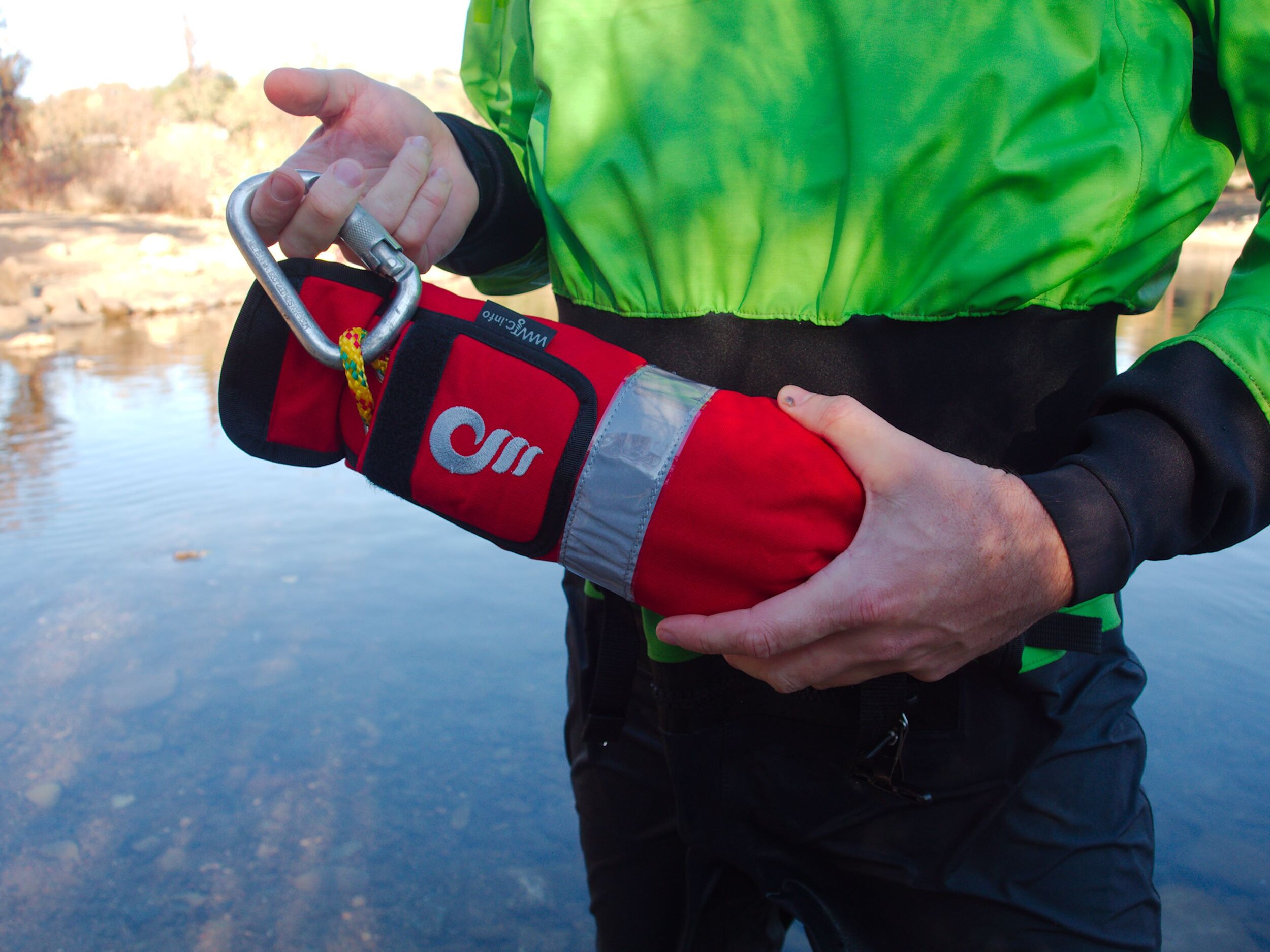The Gear Shed - WWTC Throwbag Review
Specs
Rope: Abrasion resistant 8 mm custom LANEX river rope
Bag, Belt, and Flip Line Pouch Material: non branded Cordura-like material
Throw Bag Sleeve: PVC
Maximum Break Strength: 3300 Lbs.
WWTC Throw Bag Review
The WWTC Classic 20m throw bag is an innovative waist throw bag has some amazing forward-thinking elements to it. Designed by Gaspar Goncz, who is a rescue 3 instructor, with input from our friend Mark Hirst, this throw bag is designed to meet the needs of swift water rescuers as well as follow the clean line principal. So far, I have bushwhacked through scouts, belayed a boat to put in, lined a ton of rapids, swam, and was stuck in a sieve all while using this bag. I feel like I have gotten some pretty good experience with this bag in a variety of scenarios and it definitely lives up to the hype. The bag gives you a lot of lower back coverage which I thought this was one of the best parts of the bag. Since I run a lot of creeky rivers, and I am prone to slipping on rock so I love having a lot of extra lower back coverage below my PFD. You can definitely tell that a lot of thought went into it and the general feel of the bag is super solid.
Ideal Uses
This bag is designed as an all around swiftwater rescue rope by Rescue 3 instructors from Europe. Ultimately this bag was designed to handle anything professional rescuers, river guides, or hard-core boaters can throw at it. It is designed as a dedicated throw rope. Unfortunately, at the time of writing we do not have elongation numbers so it is hard to say if this could be used as a haul line for unpinning boats.
How is it in the water?
Paddling – When Paddling this bag is designed super well in terms of placement and design, the outer sleeve fits well on my back and keeps everything together. I didn’t get any snags while paddling and it did not impact any of my mobility or paddle strokes on the water.
Swimming – I didn’t notice any additional resistance from the bag when I was swimming despite the extra bulk of the entire bag compared to my previous bag (NRS Guardian Pro). I did feel a bit more comfortable in the water just because the sleeve over the bag conforms really well to my back.
Throwing – Since I am used to the Guardian Pro bag, this was a pretty big transition. The bag does have a lot more weight to it on account of the 30% larger rope diameter, longer rope, and heftier bag construction. If you are used to a smaller bag then it’s worth it to take some time to get some good practice throwing this bag.
Portaging / Lining – This is where larger diameter rope really shines! I did a lot of portaging and lining with this bag and I can definitely say it is top notch of that purpose. Having a carabiner in the end of the bag made it really easy to clip in then move downstream. It makes it super convenient not adding the additional steps of fishing out a carabiner especially when it is cold out.
How tough is it?
The non-branded Condura-like material is basically as strong as any other nylon type materials in terms of toughness. I definitely have beat this bag around climbing all over rocks, through nasty bushes, and generally beating this thing up.
When I asked Gaspar about the rope, he used in the bag he had this to say: “River ropes get damaged due to abrasion (not breaking strength) so I was working for years to develop an abrasion-resistant sheath keeping the rope still floating and soft (abrasion-resistant materials do not float and make the rope too hard.”
There was definitely a lot of thought that went into this bag from a design stand point which I super appreciate. A lot of ropes out there are not designed for water use. As boaters we often times have to accept whatever that one rope is that was designed for water use, unlike our climbing counterparts who have a ton of options.
Important Considerations
The bag is pretty big in the 20m configuration and may be a little large for smaller paddlers.
For larger paddlers this bag completely covers the kidney and lower back area down to the hips so it can feel a little bulky.
There is a lot more weight to this bag if you are used to a smaller throw bag.
Getting the one with the flip line pouch it makes life so much easier to have your flip line close at hand.
When you go to dry your gear out, make sure you pull the carabiner out to dry since the padded pocket is usually the last thing to dry on the bag.
The quick release buckle does not have a quick release ball common to most other bags so if you are partial to this you may have to make one for yourself, though having less dangly bits is more closely aligned to the clean line principal.
The extra-large mouth makes repacking the bag extremely easy.
Is it worth the cost?
Keep in mind what this bag was built for; professional rescuers. If it is your first throw bag or you are used to a dangly boat bag this will probably feel over built. The good news is that it will definitely last you a long time. Longevity is key here, if you are someone who knows you will be boating for a long time and wants some seriously well-designed gear this bag is a go to.
Importing this from Europe can make the shipping cost a bit higher so it’s a good idea to order a couple together for your boating group. Personally, I am happy to pay the extra money for a really top end product that I will likely use every day on the water. I also like to support these forward thinking designs from small developers so I feel like the more we can encourage this kind of shift forward in the boating world, the better off we will be.







